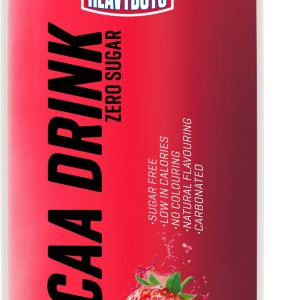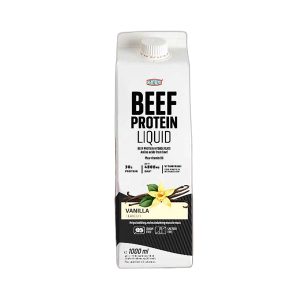 WHAT IS EAA’s? Essential Amino Acids are the key to muscle growth. BCAA’s help you recover, but EAA’s help you grow. Stack these two powerful components together and you have the ultimate recovery and growth supplement. Essential Amino Acids Fuel Muscle Protein Synthesis (MPS) and Research has shown that supplementing with EAAs before and after your workout can improve your Anabolic Exercise Response. Aminos are the basic building blocks of muscle and can trigger anabolism, the cornerstone of muscle growth. HEAVY BOYS EAA’s uses correct ratios of specific and proven Essential Amino Acids (EEAs) that are modeled after human muscle tissues. This ensures superior and rapid absorption, formula with a measured 10000 mg dose of Aminos. Once ingested, allows them to efficiently bypass the liver and enter systemic circulation, where they can exert their powerful effects. ARE YOU READY?
WHAT IS EAA’s? Essential Amino Acids are the key to muscle growth. BCAA’s help you recover, but EAA’s help you grow. Stack these two powerful components together and you have the ultimate recovery and growth supplement. Essential Amino Acids Fuel Muscle Protein Synthesis (MPS) and Research has shown that supplementing with EAAs before and after your workout can improve your Anabolic Exercise Response. Aminos are the basic building blocks of muscle and can trigger anabolism, the cornerstone of muscle growth. HEAVY BOYS EAA’s uses correct ratios of specific and proven Essential Amino Acids (EEAs) that are modeled after human muscle tissues. This ensures superior and rapid absorption, formula with a measured 10000 mg dose of Aminos. Once ingested, allows them to efficiently bypass the liver and enter systemic circulation, where they can exert their powerful effects. ARE YOU READY?
A Definition
People who practice sports challenge their bodies, urging them to achieve ever greater heights. In so doing, a physically active body consumes more substances than an inactive one. These include vitamins, minerals, carbohydrates, proteins and, partially, also fats. The purpose of endurance sports is often to burn pesky calories, but after training many important substances need to be returned to the body. Such is the case with amino acids. These are basic building blocks for proteins, so they are particularly important for athletes.
Since athletes have a higher protein requirement, they must also supply the body with a higher amount of products containing amino acids. These are the known sources of protein such as meat, egg or milk products. However, most of these foodstuffs are very high in fat. But excessive consumption is not recommended. Special nutritional supplements can supply the body with high-quality proteins and important amino acids. A low-fat diet can be encouraged at the same time. In this way, athletes can cover their increased need and ensure their bodies always gets what it needs.
Indispensable for the Body
Proteins are the basic substance of life and necessary for a multitude of bodily functions. There would be no growth without proteins because both cell and muscle growth depend upon an adequate supply of proteins. Therefore, at least 1 g dietary protein per kilogramme body weight must be consumed every day. Many athletes have an increased protein metabolism owing to the increased muscle activity, which explains why the demand is twice as high.
The dietary proteins are broken down in the body with the help of digestive enzymes (e.g. pepsin, trypsin) into their individual building blocks, the amino acids, and provide a matrix for protein metabolism. So far, there are more than 20 known amino acids that we take in via the regular dietary proteins in our daily food. The body can combine two blocks or more than 100 blocks with each another, generating (body) proteins from these such as hormones, blood cells, hair, cartilage and also muscle proteins.
In certain instances, a deficiency in proteins and amino acids may lead to a negative nitrogen balance, resulting in the body breaking down more proteins than it builds up. The proteins supply the body with nitrogen which is an essential requisite in protein formation and which the body cannot produce itself. This is why the body has to rely on a regular and adequate intake of proteins and amino acids through the daily diet.
If a deficiency lasts for a longer period, the body needs to tap into its reserves, such as the bodys own protein store, muscle proteins, for instance. These have three essential amino acids L-Leucine, L-Isoleucine and L-Valine, which are known as BCAA in sporting circles. Physical strength and the skeleton system is ultimately weakened by this extraction process. The lower amount of muscle means the bones are supported and stabilised less. In addition, the lack of proteins means other body components made up of proteins (e.g. cartilage tissue, blood cells) cannot be replaced quickly either. Protein metabolism must renew 300 g protein on a daily basis so that all bodily functions can continue uninterrupted. Hence, proteins are indispensable to the body as they help to form and maintain body proteins (e.g. muscles).
Natural Sources
Amino acids can be found in food from both animals and plants. Particularly rich sources of protein can be found in meat, seafood, fish, eggs, milk, dairy products, nuts, soy beans and pulses, for example. These products contain different amounts of amino acids. As food from animal origins has a similar structure to that of man, this protein structure is more easily absorbed than plant proteins. The plant proteins have cell walls, which hinder the proteins and their amino acids from being digested. This is why nutritional supplements from plants such as soy protein, lupine protein, amino acid compounds are also more readily available to the body than conventional dietary proteins owing to their processing. Essential and Non-Essential Substances We need to eat sufficient amounts of protein on a daily basis so that the body receives all eight of the essential amino acids to maintain all important bodily functions. Essential amino acids are vital, as the body cannot produce these itself.
A special group of essential amino acids are L-Leucine, L-Isoleucine and L-Valine, which the body cannot generate owing to the chemical branched chain structure. These three amino acids are called Branched Chain Amino Acids, otherwise known as BCAAs. More than 35 per cent of the branched chain amino acids are located in the musculature and can be converted into L-Glutamine and L-Alanine when energy is short (e.g. fasting). Both amino acids can flow into energy metabolism via several metabolic pathways and are converted into glucose or ketone. This metabolic cycle was named after the people who discovered it, a married couple by the name of Cori. The glutamine-alanine cycle is the metabolic process by which energy is released from the muscles when energy is in short supply so that other key bodily functions are preserved. This also includes the supply of sugar to the brain, blood cells and kidneys. In addition, blood sugar levels must always be kept constant. Hence, BCAAs are not only essential to the body, in emergency situations they are also involved in supplying energy to several organs.
Function in Muscle Build-Up
Amino acids are basic building blocks of proteins. The body is supplied with numerous amino acids via the daily intake of proteins. These amino acids under go a metabolic process in the body to form new protein compounds. These are 20 amino acids which the body converts into long-chained amino acids, proteins. The amino acids supplied perform essential functions in the body, for example, the digestive enzymes ensure better absorption and utilisation of food and its nutrients. This allows the muscles to use the proteins to build-up or maintain muscle mass. Hormones, blood cells, muscle fibres and joints also need to be supplied with protein and amino acids. The 20 known amino acids are divided into different groups, essential and non-essential amino acids.
L-Leucine, L-Isoleucine, L-Valine, L-Methionine, L-Threonine, L-Tryptophane, L-Phenylalanine, L-Lysine and L-Histidine all belong to the essential amino acids.
They are vital to the body as it cannot form these itself. Every day, we need to take in these essential amino acids in the form of dietary protein through our daily nutrition. In contrast, non-essential amino acids can be formed from essential amino acids, therefore it is always necessary to ensure the daily diet contains sufficient quantities of essential amino acids. Should there be a deficit in non-essential amino acids over a long period of time, the body can synthesis these via the essential amino acids.
In contrast, a deficit in essential amino acids would lead to a breakdown of the body`s own protein, consequently having a negative impact on numerous bodily functions. Semi-essential amino acids can, as the name already suggests, support essential amino acids in their function under certain physiological circumstances. For example, the amino acids L-Arginine, L-Glutamine and L-Ornithine are needed more when protein metabolism is increased. These amino acids are involved in the build-up and breakdown processes in protein metabolism. This particularly effects athletes with heavy loads or people with muscle injuries when the body increasingly needs to build-up and breakdown proteins. This, in turn, increases the protein requirement and the need for certain amino acids involved in the numerous bodily functions.
Nutritional supplements from proteins can be a useful aid by providing the body with sufficient quantities of all the necessary amino acids. Since not all dietary proteins have sufficient quantities of essential amino acids, amino acid compounds can be a good nutritional supplement, particularly when dietary proteins are not consumed in a balanced way. For example, hens eggs contain fewer amounts of the essential amino acid L-Threonine. If eggs are mainly being consumed in the daily diet, then this may lead to a deficiency of this one amino acid.
Supplements in Sports
Those who practice sports on a regular basis are not only boosting muscle performance, they are also placing demands on energy metabolism. Sports activities that mainly focus on strength, are especially dependent on the immediate energy stores, creatine-phosphate and adenosine triphosphate (ATP). This allows muscles to give short bursts of power, such as lifting a heavy weight repeatedly. For greater training performance, athletes also take creatine products, which also belong to the amino acid products. Products with creatine promote formation of ATP in the exercised muscles, which means that the repeated load can be withstood for longer. ATP is direct power for the muscles and creatine promotes a rapid regeneration of this power. This can generate more power for longer and, in combination with a high protein diet, boost muscle growth.
Since many powerlifters often eat lots of meat, the diet can become too one-sided over a longer period. This is because meat, like other dietary proteins, has one limiting amino acid which means that the amount of one essential amino acid contained in dietary protein is too low. For example, beef has too little of the essential amino acid L-Phenylalanine and a deficiency can be balanced out by means of an amino acid product such as Egg Aminos.
For sustained loads, endurance sports, for example, creatine phosphate and ATP are consumed but the main energy suppliers are chiefly carbohydrates and fats during endurance sports. This is why pasta parties are part of major running events such as marathons or triathlons. During sustained loads, endurance athletes can also fall back on food and nutritional supplements that contain carbohydrates such as fruit, energy drinks, carbohydrate gels, etc.
Since endurance athletes lose a lot of fluids due to the build-up of heat during sustained loads, it is important they take in adequate amounts of liquid in the form of water before, during and after the endurance feat. In addition, endurance athletes and powerlifters should also ensure their diet is rich in minerals as lots of minerals, for example, sodium, potassium, calcium and magnesium are lost through sweating. Many endurance athletes fail to consider dietary proteins, which are used for energy production due to the sustained load. Especially when extreme conditions last for more than an hour, the carbohydrate stores in the muscles are depleted. The body compensates for the energy deficit by mobilising amino acids from the muscles. This refers to the BCAAs (L-Leucine, L-Isoleucine, L-Valine), which are subsequently converted into the glucogenic amino acids L-Glutamine and L-Alanine. These amino acids or this metabolic process was made famous through the well-known Cori-alanine-cycle. In this metabolic cycle, the body produces glucose and ketone, which are not derived from carbohydrates. If endurance athletes have an unbalanced diet – eating more carbohydrates and less dietary proteins – the body needs to fall back on valuable muscle mass or other body proteins. The loss in muscle mass can be accompanied by a loss in performance.
- WILD BERRIES EAN: 5904212000221
- MANGO: EAN: 5904212003871













